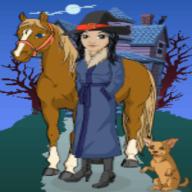熊(bear)的簡介!!!100宇左右!!!!
最好Use english!!!!!!!!
中文is可以!!
過左今日(8-11-06),答得幾好is冇用
help!!! 熊(bear)的簡介
2006-11-09 1:30 am
回答 (2)
2006-11-09 2:49 am
✔ 最佳答案
A bear is a large mammal in the family Ursidae of the order Carnivora. The adjective "ursine" is used to describe things of a bear-like nature. The collective noun for a group of them is a sleuth.Etymology
Modern English "bear" derives from Old English "bera", which itself derives from Proto-Germanic "*beron" meaning "the brown one". (Compare Old Norse "björn", Dutch "beer" and German "Bär" all meaning "bear").
Both Greek ("arktos") and Latin ("ursus") have retained the Proto-Indo-European root word for "bear" ("*rtko") but it was ritually replaced in the northern branches of the Indo-European languages (The Germanic, Baltic, Celtic and Slavic branches) because of the hunters' taboo on the names of wild animals. For example the Irish word for "bear" translated means "the good calf", in Welsh it translates as "honey-pig", in Lithuanian it means "the licker" and Russian "медведь" literally means "one who leads to honey".
Physical attributes
Common characteristics of bears include a short tail, acute senses of smell and hearing, five non-retractable claws per paw, and long, dense, shaggy fur.
Bears have large bodies and powerful limbs. They are capable of standing up on their hind legs. They have broad paws, long snouts, and round ears. Their teeth are used for defense and tools and depend on the diet of the bear. Their claws are used for ripping, digging, and catching. Black bears, and likely other bears, have color vision to help them identify fruits and nuts.
Depending on the species, bears can have 32 to 42 teeth. Bear teeth are not specialized for killing their prey like those of cats. Normal canine teeth in a carnivore are generally large and pointed used for killing prey, while bears' canine teeth are relatively small and typically used in defense or as tools. Bears' molar teeth are broad, flat and are used to shred and grind plant food into small digestable pieces.
Bears have four limbs that end in paws. Each paw has five long, sharp claws that are unretractible, unlike cats. These claws can be used to climb trees, rip open termite nests and beehives, dig up roots, or catch prey, depending on the species. While most carnivores tend to walk on their toes in a way that is adapted for speed, bears have a plantigrade stance. They walk with their weight on the soles of their feet, with the heel touching the ground, while the claws of the arm are used more for balance. Although slower than most carnivores, a running bear can reach speeds of up to 50 km/h (30 mph).
A bear's fur is often long and shaggy. Fur color varies among species, ranging from white, blonde or cream, black and white, to all black or all brown. Colors of a bear's fur can also vary within species. For example, American black bears may be black, brown, reddish-brown, or bluish-black. Several species, such as the sun bear and spectacled bear have a light-colored chest with facial markings.
In all bear species, males are larger than females, but the difference between sexes varies and is greatest in the largest species. Large male polar bears may weigh twice as much as females, while smaller male and female bears are much more similar in weight. A bear's life span seems to last about 25 to 40 years. Bears living in the wild tend to die younger than their zoo-counterparts.
Habitats
Bears live in a variety of habitats from the tropics to the Arctic and from forests to snowfields. They are mainly omnivorous, although some have a more specialised diet, such as polar bears. They eat lichens, roots, nuts, and berries. They can also go to a river or other body of water to capture fish. Bears will commonly travel far for food. Hunting times are usually in the dusk or the dawn except when humans are nearby.
2006-11-09 1:43 am
熊,食肉目,是屬於熊科的雜食性大型哺乳類,以肉食為主。從寒帶到熱帶都有分佈。
特徵
常見的特徵有短尾、極佳的嗅覺和聽覺、五個無法收縮的爪,以及長、密、粗的毛。
熊有強壯的四肢,可以站立。牠們的牙齒是用來防禦和當作工具。牠們的爪子可以用來撕扯、挖掘和抓取獵物。
許多熊在冬天時被認為會冬眠。事實上,熊並不冬眠。牠們的體溫只下降適當的量,而且很容易被吵醒。
熊的平均壽命是25到40年。
北極熊是最大型的熊,是現存陸地上最大的食肉動物。太陽熊(馬來熊)是最小型的,比人的平均體重還小一點。
文化
熊在一些大眾文化常被賦與人性。
1902年美國總統西奧多·羅斯福(綽號"泰迪")曾經在密西西比拒絕射殺一隻熊,後來這隻熊成為填充玩具泰迪熊的原型。
特徵
常見的特徵有短尾、極佳的嗅覺和聽覺、五個無法收縮的爪,以及長、密、粗的毛。
熊有強壯的四肢,可以站立。牠們的牙齒是用來防禦和當作工具。牠們的爪子可以用來撕扯、挖掘和抓取獵物。
許多熊在冬天時被認為會冬眠。事實上,熊並不冬眠。牠們的體溫只下降適當的量,而且很容易被吵醒。
熊的平均壽命是25到40年。
北極熊是最大型的熊,是現存陸地上最大的食肉動物。太陽熊(馬來熊)是最小型的,比人的平均體重還小一點。
文化
熊在一些大眾文化常被賦與人性。
1902年美國總統西奧多·羅斯福(綽號"泰迪")曾經在密西西比拒絕射殺一隻熊,後來這隻熊成為填充玩具泰迪熊的原型。
收錄日期: 2021-04-12 20:22:59
原文連結 [永久失效]:
https://hk.answers.yahoo.com/question/index?qid=20061108000051KK02405

